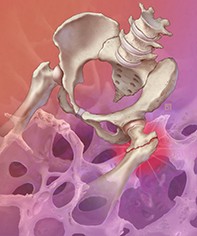Peer Reviewed
Feature Article Endocrinology and metabolism
Osteoporosis and fragility fractures: a practical approach
Abstract
In patients with established osteoporosis or a fragility fracture, lifestyle measures such as exercise, supplements and falls risk reduction have not been shown to prevent further fractures. Specific pharmacological treatments can reduce the risk of fractures and may prolong survival.
Key Points
- Fragility fractures (fractures following minimal trauma) signifying osteoporosis are common in both sexes.
- Fragility fractures signal a high risk of further fracture and are associated with high morbidity and increased mortality.
- Most Australians with a high fracture risk do not receive treatment to reduce this risk.
- Lifestyle changes such as exercise, falls risk reduction and calcium and vitamin D supplementation have not been shown to reduce fracture risk and should not be considered adequate to treat patients with a fragility fracture or established osteoporosis.
- Specific osteoporosis treatments can reduce the risk of fractures and may prolong survival; they include hormonal therapies, antiresorptive agents and, for very severe osteoporosis, anabolic therapies.
Picture credit: © Steve Oh
Purchase the PDF version of this article
Already a subscriber? Login here.

